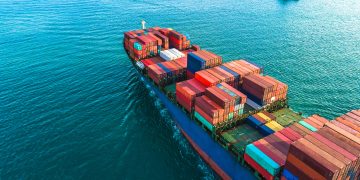Ocean Conservancy recently released a study that notes that five countries – China, Indonesia, the Philippines, Vietnam and Thailand – account for nearly three-fifths of the estimated annual input of plastic into the global ocean, due to these nations’ inadequate waste disposal and collection systems.
The study concludes that by implementing fundamental waste management systems in the five nations, the amount of plastic entering the global ocean could be cut by 45%.
At a glance
- At least 80 percent of ocean plastic comes from land-based sources, but the actual number is probably much higher.
- Three-fourths of land-sourced ocean plastic comes from uncollected waste or litter, while the remainder comes from gaps in the collection system itself.
- Low-residual-value plastic waste is more likely to leak than high-value plastic.
- Collected and uncollected plastic waste enters the ocean from five physical locations
- Imported end-of-life plastic contributes to the waste stream in China but is not a significant contributor in the Philippines.
- Treat waste by using gasification or incineration with energy recovery
- In the short term (by 2020), improving collection infrastructure and plugging postcollection gaps reduce annual leakage by nearly 50 percent.
- In the medium term (by 2025), the development of commercially viable waste treatment can reduce annual leakage by an additional 16 percent, for a total reduction of 65 percent across the five focus countries.
- In the long term (by 2035), additional measures ensure that total leakage is not rebounding on the basis of higher base volumes.
Ocean Conservancy explains that they have cataloged 33 potential solutions to the ocean-plastic problem and analyzed 21 of them in detail. They found that maximum impact can be achieved from six solutions:
- Expand collection service and ultimately increase waste-collection rates (plastic waste is more than twice as likely to leak if it remains uncollected).
- Close leakage points within the collection system (7 percent of collected waste currently leaks into the ocean).
- Keep leakage points in the system closed by using commercial treatment that increases the value of plastic waste.
- Convert waste to fuel or electricity in areas that have high waste density.
- Manually sort waste in areas with low waste density to extract for recycling the 20 percent of plastic waste that has a high residual value.
- Convert the 80 percent that is of low residual value to refuse-derived fuel (RDF) for industrial application
Find out more by reading the study
Source: Ocean Conservancy
In the start, I was forthright with you propecia before and after has changed my existence. It has become much more fun, and now I have to run. Just as it is improbable to sit.





























































